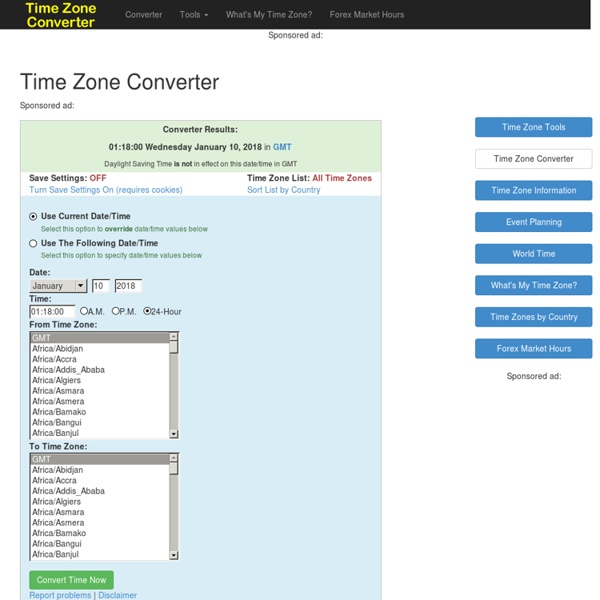



http://www.timezoneconverter.com/cgi-bin/tzc.tzc
Aspiral Clocks Here comes the revolutionary concept Aspiral Clocks designed by Will Aspinall and Neil Lambeth. How does it work? The clock face ever so slowly spirals over the course of twelve hours, moving a rolling ball precisely around, telling the time as it goes. Brilliant! By the way, for all sorts of wonderful… free printable calendar templates.
Clock The clock is one of the oldest human inventions, meeting the need to consistently measure intervals of time shorter than the natural units: the day, the lunar month, and the year. Devices operating on several physical processes have been used over the millennia. A sundial shows the time by displaying the position of a shadow on a flat surface. Time The flow of sand in an hourglass can be used to keep track of elapsed time. It also concretely represents the present as being between the past and the future. Time is a dimension in which events can be ordered from the past through the present into the future,[1][2][3][4][5][6] and also the measure of durations of events and the intervals between them.[3][7][8] Time has long been a major subject of study in religion, philosophy, and science, but defining it in a manner applicable to all fields without circularity has consistently eluded scholars.[3][7][8][9][10][11] Nevertheless, diverse fields such as business, industry, sports, the sciences, and the performing arts all incorporate some notion of time into their respective measuring systems.[12][13][14] Some simple, relatively uncontroversial definitions of time include "time is what clocks measure"[7][15] and "time is what keeps everything from happening at once".[16][17][18][19] Temporal measurement and history[edit]